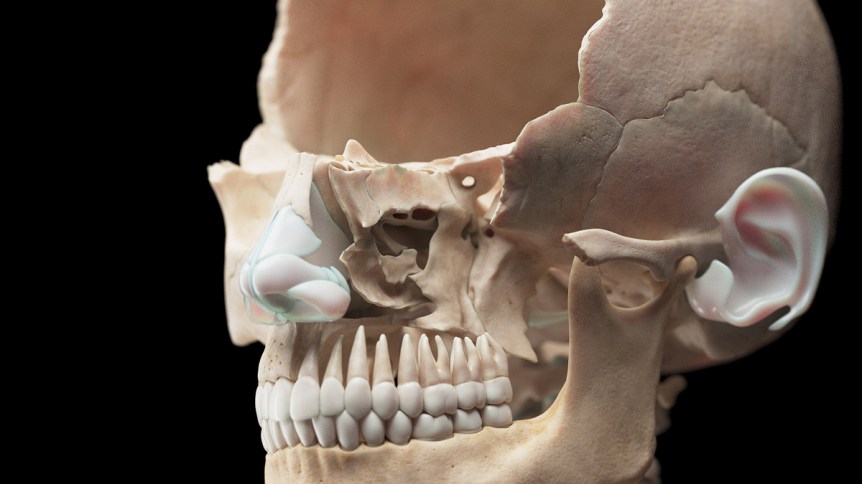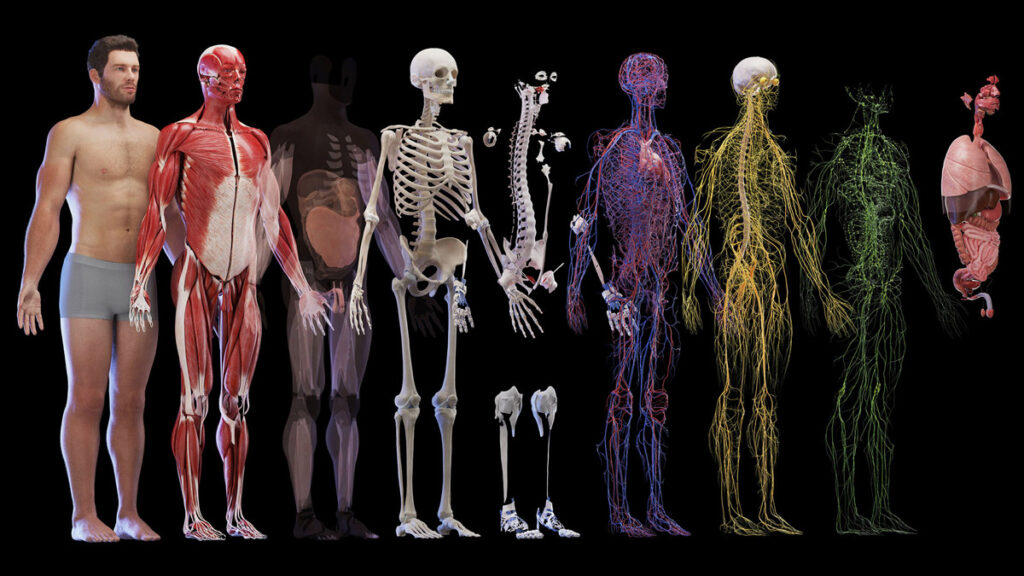If you’re experienced selling models on TurboSquid, you might pride yourself on the level of care and detail you give to your models, whether it be a tree with an accurately layered bark pattern or a sports car with signature accents that tie it to the year it was made. Attention to detail is important for people who use these models, but it’s especially vital for the medical industry.
Imagine your doctor describing your symptoms using a 3D model that had obvious anatomical inaccuracies to it. Would you question your doctor’s expertise? Or if you paid for a healthcare app that had these same mistakes, would you request a refund? Turns out, it can be quite arduous to create an anatomically accurate 3D model, which is why it’s not uncommon to see where artists can cut corners to save time and money on a project.
SciePro founder Sebastian Kaulitzki knows the challenges that come with being so focused on the details. Founded in Berlin in 2005, his company has created more than 70,000 digital illustrations and animations to date. Among these creations was a well-used anatomy model that did what it needed to do visually, but wasn’t completely accurate anatomically. It was functional for what could be created in a six-month timespan, and it wasn’t too different from other models on the market at the time.

Sebastian would later learn from people making apps for VR/AR projects that it’s difficult to find anatomically accurate models, especially with features like high-resolution options, displacement maps, and more. So, he and his team went to work on their next creation that will surely make some waves in medical and scholarly communities. After eight years of research and work, SciePro is bringing the most accurate 3D model of the human anatomy to TurboSquid.
“A 3D artist can’t build something like this alone,” says Sebastian. “We couldn’t have done this without the advice of cardiac surgeons, nerve and brain experts, medical doctors, and orthopedic practitioners to understand the nuances in modeling parts of the human body.” Nine doctors aided the team with technical details big and small to overcome some of the flaws of other anatomical models on the market — low resolution, only diffuse maps, to name a couple — and create a truly modern resource.
A cursory glance at the model shows how complex it is with 3,600 individual, correctly named structures. From the nervous system to the gallbladder, each structure has its own 3D model. Eleven artists diligently worked to ensure there were no intersections with any of the models in the entire body, an effort that tested the patience of everyone on the team.
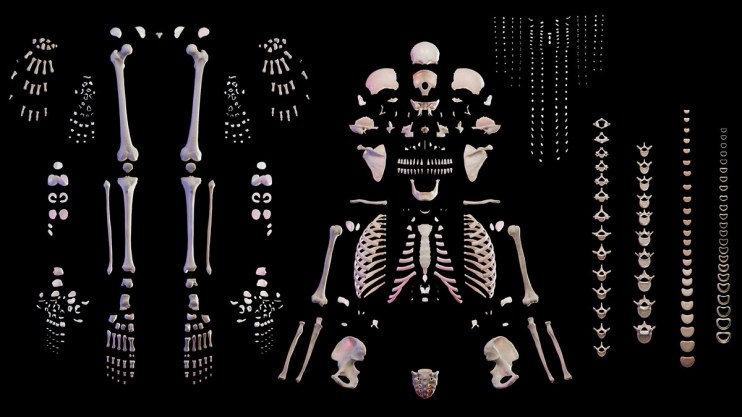
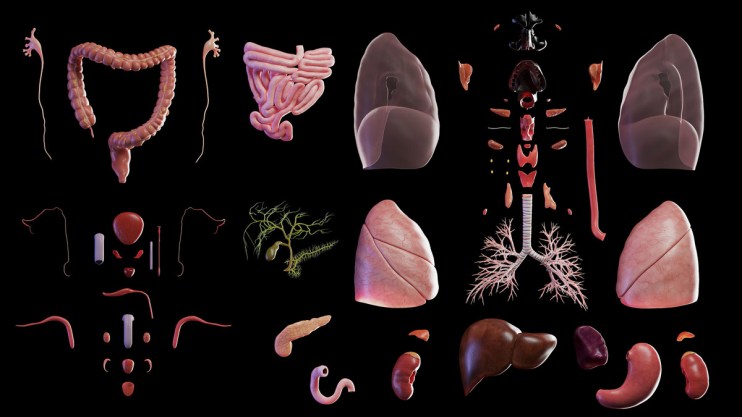

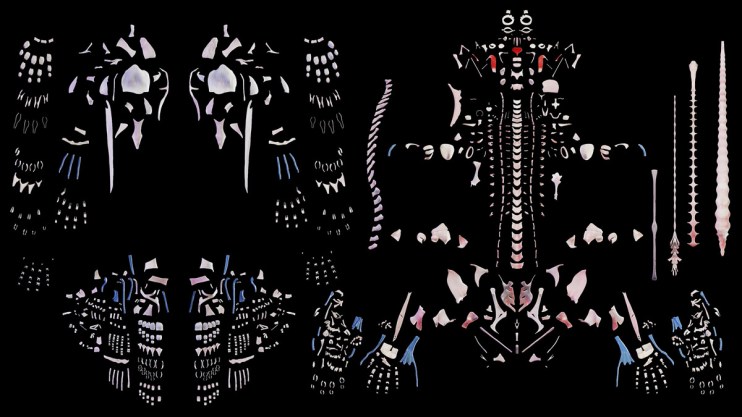
“You can feel like the bad guy when you need to tell an artist to change something because it’s not anatomically correct,” says Dr. Spela Salamon, Ph.D. “Any change to the model had so many consequences because everything had to sit so close together in the body. Just one minor inaccuracy resulted in uncounted hours of work to ensure nothing intersected.”
Faith in the final result has led us here, though. SciePro’s anatomical model is now the most complete version people can license. It’s available in 8K and built to last for at least the next 10 years.
From Skeleton to Skin: Building a Body
Recruiting a team specialized for this undertaking required Sebastian to look far and wide to artists and doctors in the United States, Ukraine, and the Philippines, to name a few. Once the team was assembled, they needed to assess where to begin modeling, which is a difficult decision because body parts are so reliant on one another.
Piecing together bones and muscles creates a domino effect of changes as artists add more to the model. Sometimes it was simpler to model first and then compare the body part to real-world references from MRIs, X-rays, and CT scans. If they couldn’t locate one, they did what any hard-working artist would do — they looked for an example in person. You’d be surprised at how many questions you can get answered when someone is cutting open a skull in front of you.
For other organs like the lungs, it can sometimes be quite difficult to distinguish between arteries, veins, bronchi, and more. One artist, for example, spent hours on the cartilage plates in the lung and still could have spent much longer on it. Sebastian explains, “He was doing nothing else for four weeks and finally told me, ‘I can’t do this anymore, I see cartilage plates when I close my eyes!’” There’s a balance of art and scientific accuracy necessary to build a model like this.
Tools and Techniques: Piecing a Body Together
That meticulous attention to detail ensuring none of the body parts intersect is part of what makes this model stand out from the rest. Let’s say you wanted a snapshot of it from a specific angle. Simply hit render and you’ll get a perfect image. This completely differs from the intersectionality-challenged models you see online. By spending countless hours/years fixing everything, the team has ensured a quality result every time.
“We’ve taken the time to split up everything, so there are thousands of objects inside this model all created using 3ds Max and ZBrush,” says Sebastian. “Each nerve, lymphatic vessel, and artery, everything is split up and named correctly. It’s something we’ve been asked for in the past, so we’re extremely happy with how it turned out.” To get those fine touches, SciePro’s team even went to universities to record on-site documentation of the body.
High-definition photos of bones, muscles, and hearts were captured to get accurate texturing resources for use in Mari and Adobe Photoshop. These photoshoots were necessary because there are still so many areas of the human body that aren’t well-researched. In fact, new body parts have been discovered in recent years, so the closer you can get to known data, the more likely a model will stand up over time.
Accuracy also presents another challenge: creating a visually appealing model. SciePro has had experiences where clients ask for alterations to make a model more attractive, for example, changing the shape of a finger. An anatomically accurate model like this doesn’t reflect the likeness of one singular body, nor does it look like the artistic drawings you see in an anatomy atlas.
SciePro’s team of artists and medical experts have had lengthy discussions about the balance of anatomical accuracy and a visually appealing model. “There will always be someone who looks at it and suggests they change a part of it due to an anatomical variation,” says Sebastian. “However, we believe this model is not only the most accurate 3D model on the market but also the most beautiful.”
Now complete, Sebastian is excited to see what’s going to be made with it.
Putting a Body to Work
SciePro receives loads of customer feedback for future models — like requested file formats and specific use cases — from selling on Shutterstock and TurboSquid. “I’ve seen a huge interest growing every year for an anatomically accurate 3D model, and I recently used it to show a client the vascular supply of the digestive system,” says Sebastian. “It would have been arduous to do this before, but now I can drag and drop it into a scene and create a file of it for a client within 10 minutes.”
SciePro would like to see this model used to help students become more familiar with the human anatomy, or guiding apps and other resources that take advantage of its real-time 3D capabilities. Imagine using your phone to get a 360-degree view of the stomach, rather than a 2D picture in a textbook. It could also be a fantastic resource when a medical student can’t view a real-life cadaver.
Other potential uses of SciePro’s model include:
- Cardiologists, obstetricians, and other medical doctors could provide a patient with ultrasound instructions or give them easy-to-understand visual examples of where symptoms may affect the body.
- Med-tech companies could use it to create animations that review how new technology, like implants, will work.
- Medical, scholarly, and marketing industries could create custom snapshots of the body by easily rendering high-quality images.
A Body for Everybody
Both the entire model and individual body parts will be available on Shutterstock’s 3D asset marketplace, TurboSquid, starting today. These models have a long shelf life and are CheckMate certified, ensuring their readiness for all professional use cases.
“We’ve always wanted this model to run in real-time 3D, so it’s very well-optimized,” says Sebastian. “We even have two versions of the textures: an optimized and reduced JPEG version and an uncompressed 8K version with TIFF files. I’m confident our model will last for at least the next 10 years.”
The model is native to 3ds Max, but conversions are planned for Maya, ZBrush, Cinema 4D, and Blender. There will also be conversions for different renders and engines, such as Arnold, V-Ray, Corona, and Unity.
With so many models inside this model, it will take time for each of them to be CheckMate-certified through TurboSquid, but expect to soon see the heart, skeleton, and muscle system, plus many more.
Learn more about SciePro from their website and TurboSquid profile.

